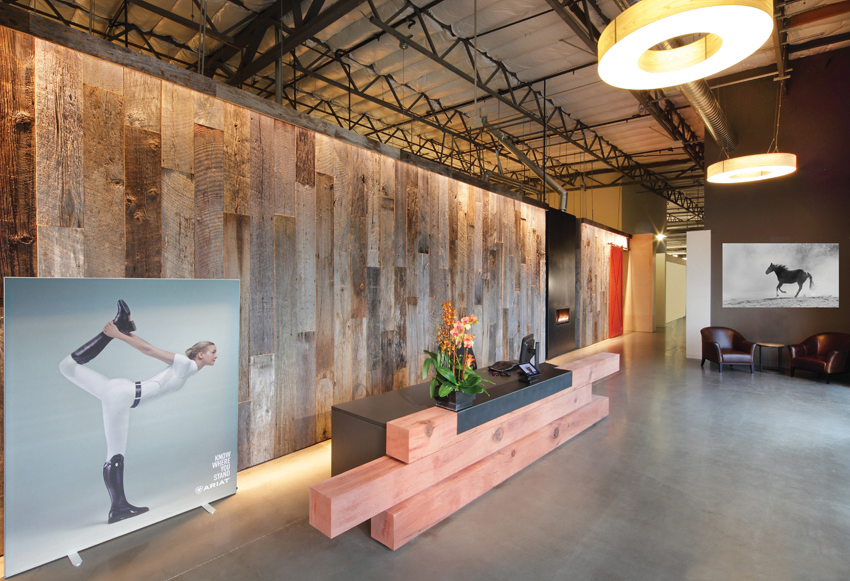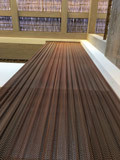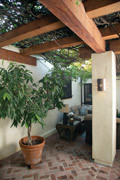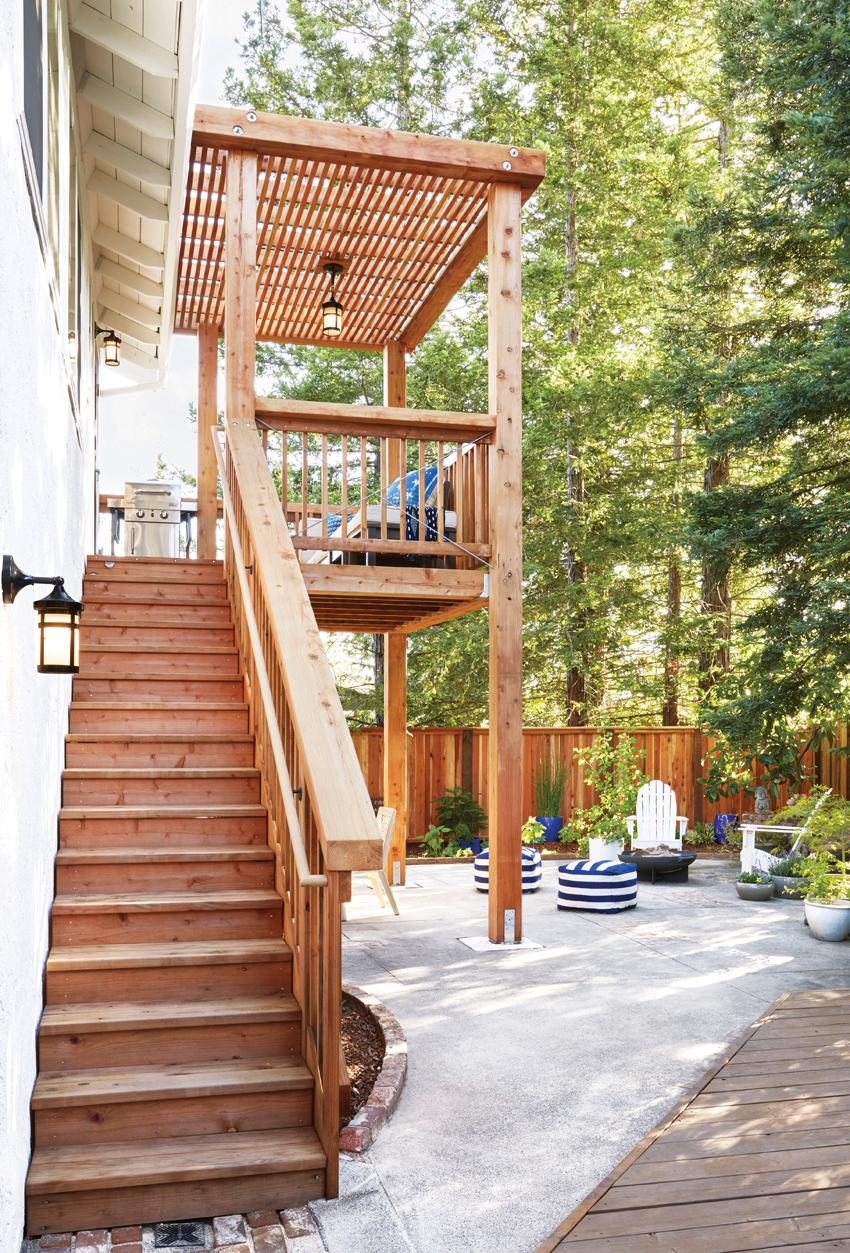Designing for the Contemporary Custom Home
High-Performance Redwood
Most contemporary custom homes are constructed with wood. And while often the structure is hidden away and covered with drywall and sheathing, some designers deliberately showcase parts of the structure, leaving posts, beams, and other wood elements exposed. This is classically achieved in timber-frame construction and modified timber-frame designs.
On the exterior and outside the main home structure, wood is also used extensively, whether for siding as the structure for outdoor rooms, arbors, and pergolas; for decks, stairs, and railings; or for walkways, benches, and other landscape accents.
When used structurally, wood timbers need to be light and strong; if exposed, timbers should reveal a pleasing grain and color, and they should not crack or warp over time. When wood is used outside, whether structural or not, it is exposed to rain, ultraviolet sunlight, moisture, temperature extremes, and wear and tear from foot traffic and pets. Consequently, it is important to specify wood species that are naturally resistant to these forces. Some wood varieties, including cedar and redwood, are naturally rot and insect resistant; these species can be left untreated and will naturally weather to a soft pleasing gray color. The wood can also be finished with a stain, semitransparent stain, or paint, although maintenance will be higher.
The U.S. Department of Agriculture (USDA) Wood Handbook lists redwood as a naturally durable wood species. It is also beautiful. Redwood heartwood is cinnamon red in color and comes from the center of the tree. Naturally occurring tannins lend redwood heartwood natural resistance to termites and decay. Redwood sapwood is creamy yellow in color and comes from the outer section of the tree.
Tests by the USDA’s Forest Products Laboratory show that redwood loses less than 1⁄4 inch of wood fiber in 100 years of exterior exposure. When dried to 10 percent moisture content, redwood shrinks only 1.7 percent across vertical grain lumber and 3.3 percent across flat grain. This gives redwood the least volumetric shrinkage of commercially available domestic woods. Less shrinkage means less warping, cupping, and nail popping.
Redwood is lightweight, strong, and easy to work. Its open cell structure contains little pitch or resin, and it holds paints, stains, and other finishes extremely well.
Making Sustainable Choices
Architects and designers can specify products and materials that help meet a custom home project’s sustainability goals. There are many facets to sustainability. For example, a high-performance window contributes to a home’s energy efficiency, helping to lower energy usage (and costs) for decades. But there are other considerations. What is that window made of, and what did it cost—in terms of materials, energy, water, and waste—to make it? How durable is the window? Will it have to be replaced, or will it last the life of the building?
Third-Party Certifications
Third-party certification programs can help homeowners and designers achieve sustainability goals, whether that goal is to certify the project under a green building program such as LEED or the Living Building Challenge, reduce the project’s carbon footprint, or simply ensure a healthy home.
Several third-party programs can help vet products and materials and help designers make the most sustainable choices. Some of these—GREENGUARD, for example—focus on health, as evaluated by the emissions of certain chemicals. Others focus on a certain category of materials or practices. For example, the FSC certifies forests that employ sustainable practices as determined by a comprehensive set of metrics.
Other programs have a more general scope. Declare, for example, is a transparency program hosted by the International Living Future Institute. A Declare label discloses all of the “ingredients” in a product and whether that product contains any items on the “Red List,” a group of worst-in-class chemicals and compounds.
Following are some examples of how specifiers can use these programs to vet products and materials for custom homes.
FSC-Certified Forests
Redwood is an extremely durable, desirable, and versatile wood with many possible applications inside and outside the home. In general, wood is considered a renewable resource that sequesters carbon. However, forest practices vary widely, and clients and design professionals should rightly consider the source of the lumber to make environmentally responsible choices.
Coast redwood, sometimes called California redwood, grows exclusively in Northern California in the narrow “fog belt” hugging the coast. Before the Gold Rush, redwood forests once covered more than 2 million acres; today, only a fraction of that old-growth forest remains.
Though logging of the Redwood Region began decades before, whole-sale clear-cutting of these magnificent trees ramped up in the mid-1980s. In the early 1990s, environmentalists organized and worked with the federal government to pass the Headwaters Forest Agreement to stop logging of old growth, which ultimately led the industry to sustainable management and restoration of redwood forests in California. The vast majority (95 percent) of the remaining old-growth redwood forests are protected within parks and preserves. Since 1999, the redwood industry in California has been restoring the forests and has increased timberland yield each year with the practice of sustainable forest management.
Today, redwood is a responsible wood option. Choosing redwood lumber that is FSC certified can ensure that the manufacturer is committed to sustainable forestry practices. FSC certification entails an independent evaluation of a landowner’s forestry practices using strict environmental and socioeconomic standards. FSC also provides chain-of-custody monitoring, which tracks a product from an FSC-certified forestland to the final product.

Photo: Bourne Photo
Today, discriminating clients can feel good about choosing redwood harvested from sustainably managed forests.
Notice

www.cascade-architectural.com

www.getredwood.com

www.rockymountainhardware.com










